- Remittance
- Exchange Rate
- Stock
- Events
- EasyCard
- More
- Download
Powell Signals a Rate Cut in September: Which U.S. Stock ETFs Will Benefit the Most?
The Jackson Hole Global Central Bank Annual Economic Policy Symposium is regarded by the outside world as an important stage for central banks around the world to convey monetary policy signals. It attracts central bank “leaders” and economists from many countries to attend every year. The theme of this year’s annual meeting is “Reassessing the Effectiveness and Transmission of Monetary Policy”.
On Friday, August 23rd US time, Federal Reserve Chairperson Powell clearly stated that a rate cut is coming, which pushed the three major US stock indexes to open and close significantly higher, and US bond yields plummeted. This was a day of general rise in US stocks, with 80% of US companies rising today. All 11 sectors of the S & P 500 closed higher, with the real estate sector up 2%, ranking first.
At the Jackson Hole annual meeting of global central banks, Powell said the long-awaited words - now is the time to adjust policy, and “the upside risk of inflation has diminished” .
As soon as the words fell, global stock markets fluctuated! US stocks, gold and other currencies rose sharply in response!
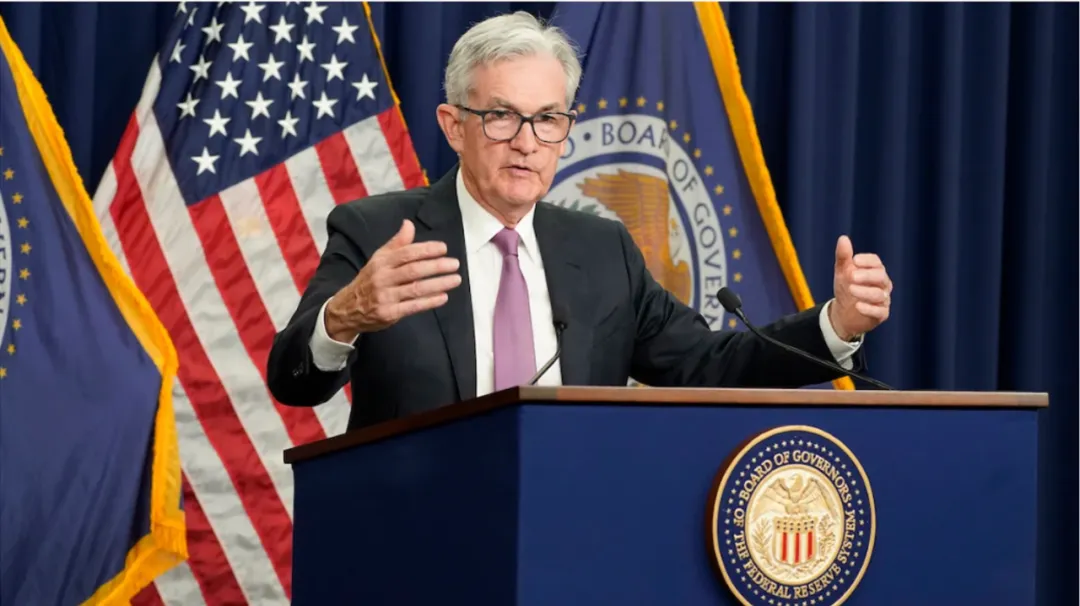
" Say goodbye to the interest rate hike cycle, September is finally going to cut interest rates "
Powell said in his speech, “I am increasingly confident that inflation is sustainably returning to the path of 2%; the labor market has cooled significantly and is no longer overheated as before… We do not seek or welcome further cooling of labor market conditions.” Powell’s series of speeches mean that the Fed is very likely to cut interest rates at its policy meeting next month, which will be the first rate cut in more than four years.
Powell said, “The timing and pace of interest rate cuts will depend on the balance of data, prospects, and risks. The upside risk of inflation has weakened, while the Downside Risk of employment has increased. The rise in unemployment is not due to increased layoffs; the rise in unemployment is due to an increase in labor supply and a slowdown in hiring. Powell believes that the labor market seems unlikely to become a source of inflation soon; the cooling of the labor market is” obvious “and no longer overheated.”
Market analysts point out that Federal Reserve Chairperson Powell has sent the strongest signal of interest rate cuts so far, indicating that the Fed intends to take action to avoid further weakness in the US labor market. According to FedWatch data from CME Group, The market bets that the probability of a 25 basis point rate cut by the Fed in September is 73.5%, and the probability of a 50 basis point rate cut is 26.5%.
What impact will the Fed’s interest rate cut have on the global trend of asset prices?
Below, the editor will discuss with everyone the performance of equity, fixed income, foreign exchange, and commodity asset prices during the interest rate cut cycle, providing reference for investors.
1. Stock market performance
Historical data shows that the Fed’s interest rate cut cycles are often associated with stock market rebounds, especially those that did not accompany severe economic recessions (such as 1987, 1995, and 1998). During these periods, the increase in liquidity brought about by interest rate cuts reduced the cost of Corporate Finance, usually leading to a rise in the stock market. However, stock market rebounds are usually accompanied by volatility, as interest rate cut cycles are usually initiated against the backdrop of weak economic performance or downside risks.
During the interest rate cut cycle, interest rate-sensitive industries (such as real estate, finance, and consumer stocks) tend to perform better. This is because these industries benefit from lower financing costs in a low interest rate environment. However, as the interest rate cut progresses, growth stocks such as technology stocks may regain market favor, especially when investors expect future economic recovery.
2. Bond market performance
Interest rate cuts usually lower short-term and long-term bond yields, causing the yield curve to steepen. This is beneficial for long-term government bonds, as falling yields push up bond prices. On the other hand, as inflation expectations decline, the attractiveness of inflation-protected bonds (TIPS) may decrease.
Interest rate cuts usually improve the financing environment for companies, narrowing credit spreads, especially in the high-yield bond market. However, if the economic slowdown exceeds expectations, risks in the high-yield bond market may increase as corporate default rates may rise.
3. Foreign exchange market performance
Interest rate cuts by the Federal Reserve tend to weaken the US dollar, especially relative to the currencies of countries with tighter monetary policies. In this case, Emerging Markets currencies and commodity currencies may perform better, especially those commodity-producing countries that rely on exports.
The depreciation of the US dollar caused by interest rate cuts may prompt international investors to seek higher-yielding assets, leading to capital flows to Emerging Markets. However, this may also exacerbate the instability of global capital flows, especially in economies that rely heavily on US dollar financing.
4. Commodity market performance
Interest rate cuts are usually beneficial for gold because low interest rates reduce the opportunity cost of holding gold. At the same time, interest rate cuts often accompany a weaker US dollar, which further drives up the price of gold. Other precious metals, such as silver, may also benefit from the expected increase in industrial demand.
The expected increase in global economic growth brought about by interest rate cuts may boost demand for crude oil and industrial metals. However, the risk of economic slowdown may suppress the upward space of prices for these commodities.
5. Real estate market performance
Interest rate cuts directly affect the reduction of mortgage rates, increasing the attractiveness of the real estate market. Low interest rate environments usually stimulate housing demand, thereby driving up real estate prices, especially in markets with limited supply.
Commercial real estate and Real Estate Investment Trusts (REITs) perform well in a rate-cutting environment, especially when financing costs decrease and rental market demand stabilizes. However, if the economic slowdown intensifies, the commercial real estate market may face the risk of reduced rental demand.
6. Alternative assets and hedging strategies
Interest rate reduction cycles usually favor private equity stakes, as lower financing costs make leveraged buyouts and portfolio optimization more attractive. Hedge funds may benefit from market fluctuations through active strategic layout, such as capturing opportunities brought by currency and interest rate changes through macro hedging strategies.
Overall, the Fed’s interest rate cut cycle has a profound impact on different asset classes and market performance. From stocks, bonds, foreign exchange, commodities to real estate and alternative assets, the performance of various assets is driven by multiple factors, including interest rate changes, economic cycles, market expectations, and global economic environment. When facing the interest rate cut cycle, investors can conduct multi-dimensional analysis and layout based on the different characteristics and risk factors of asset classes.
For ETF investors, the following are the types of ETFs that may benefit and why:
1. Bond ETFs
Long-term Treasury Bond ETF : Powell mentioned that inflationary pressures are easing, indicating that long-term interest rates may decline. As a result, the price of long-term Treasury bonds may rise, and related ETFs such as iShares 20 + Year Treasury Bond ETF (TLT) will benefit from it. Investors can consider increasing their allocation to such bond ETFs to enjoy the capital appreciation brought by the decline in interest rates.
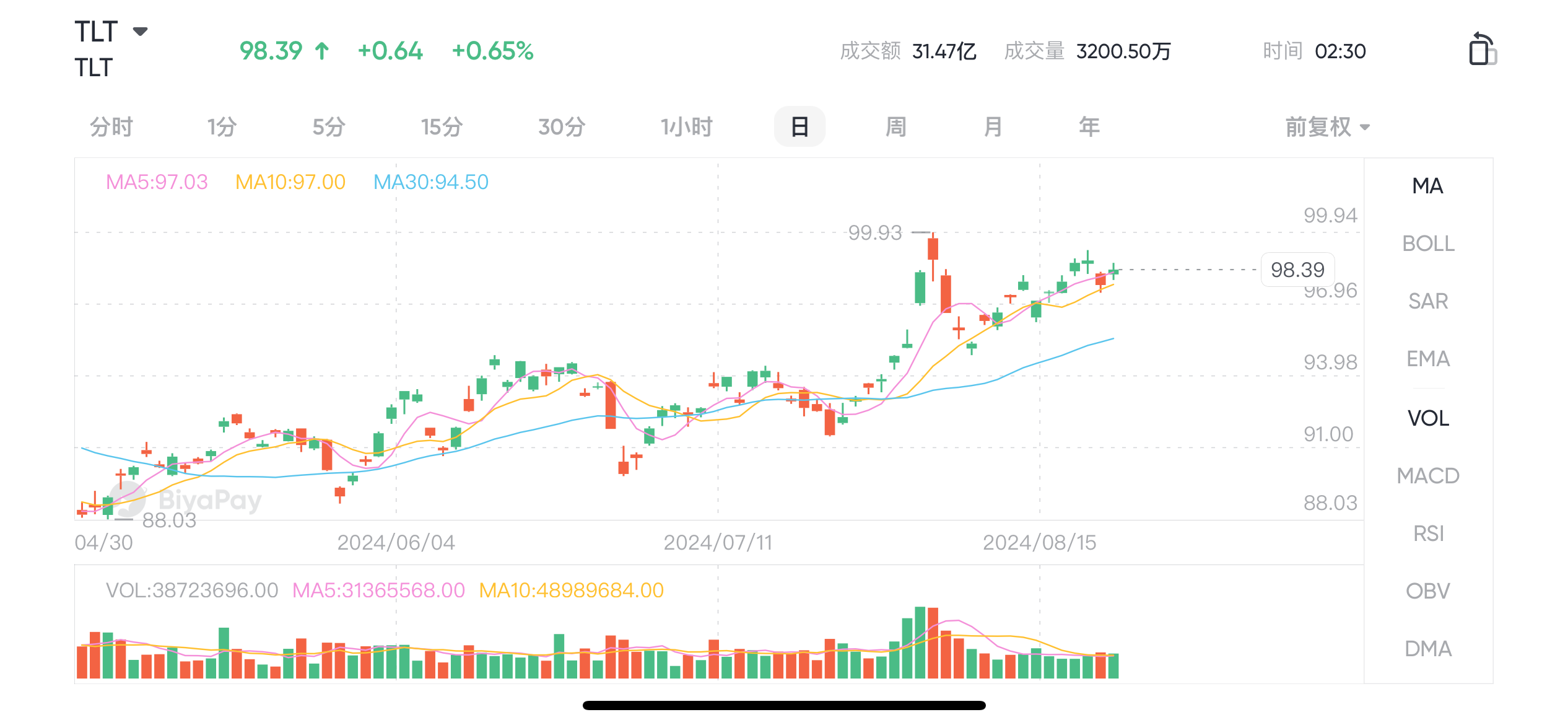
2. Growth Equity ETFs
Nasdaq 100 ETF: With the Fed hinting that the time for policy adjustment has come, the market’s expectation of interest rate cuts has strengthened, which is particularly beneficial for growth stocks that rely on a low interest rate environment. Nasdaq 100 ETFs such as Invesco QQQ Trust (QQQ) may receive premiums because they cover a large number of technology stocks and other growth companies.
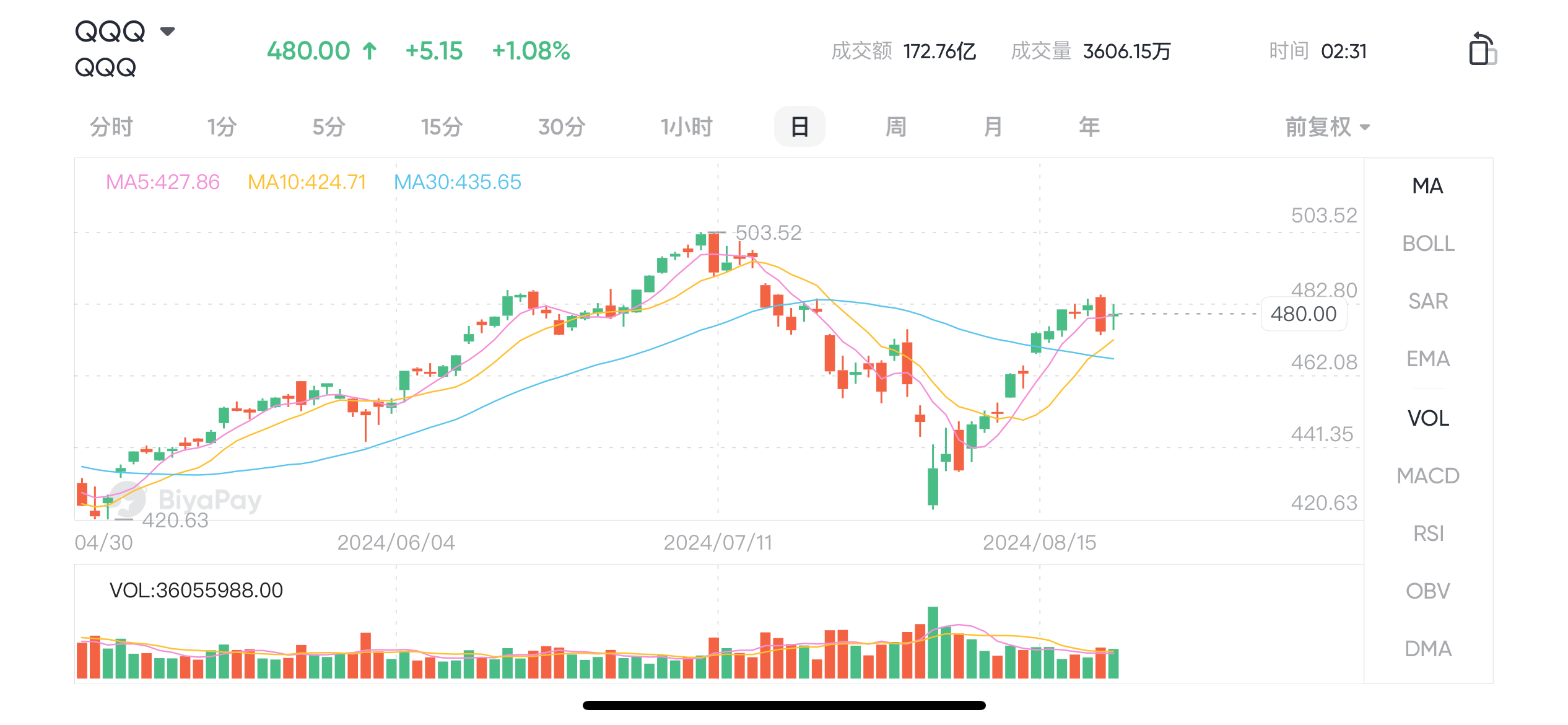
3. High Yield Bond ETFs
High-Yield Bond ETFs : If expectations of lower interest rates strengthen, the Risk Premium of high-yield bonds may shrink, leading to an increase in the price of these bonds. High-yield bond ETFs such as iShares iBoxx $High Yield Corporate Bond ETF (HYG) may benefit from this and are suitable for investors seeking higher returns.
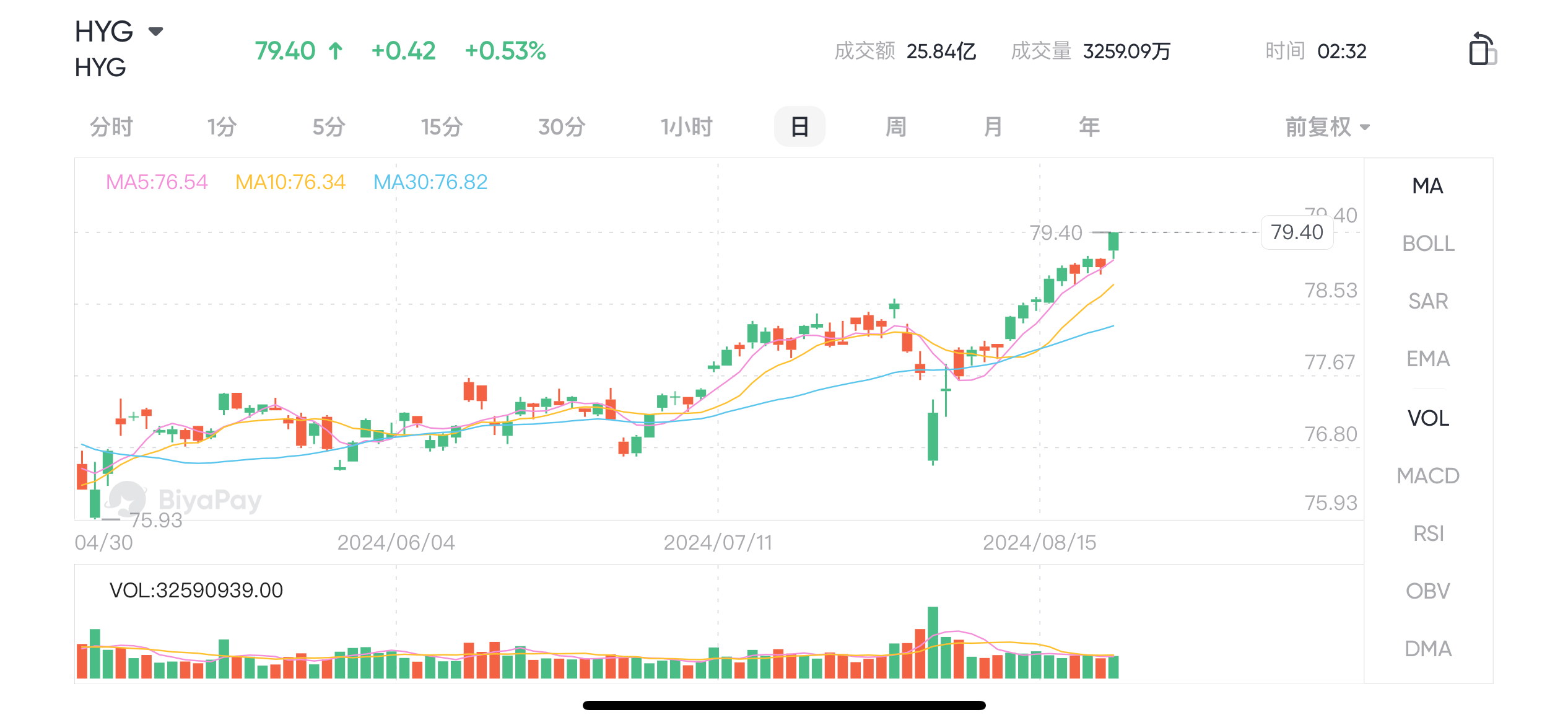
4. Gold ETFs
Gold ETF : The policy adjustments mentioned by Powell could weigh on the dollar, especially in the context of interest rate cuts, which usually push up gold prices. Gold ETFs such as SPDR Gold Shares (GLD) are ideal for hedging currency depreciation risks and inflation expectations.
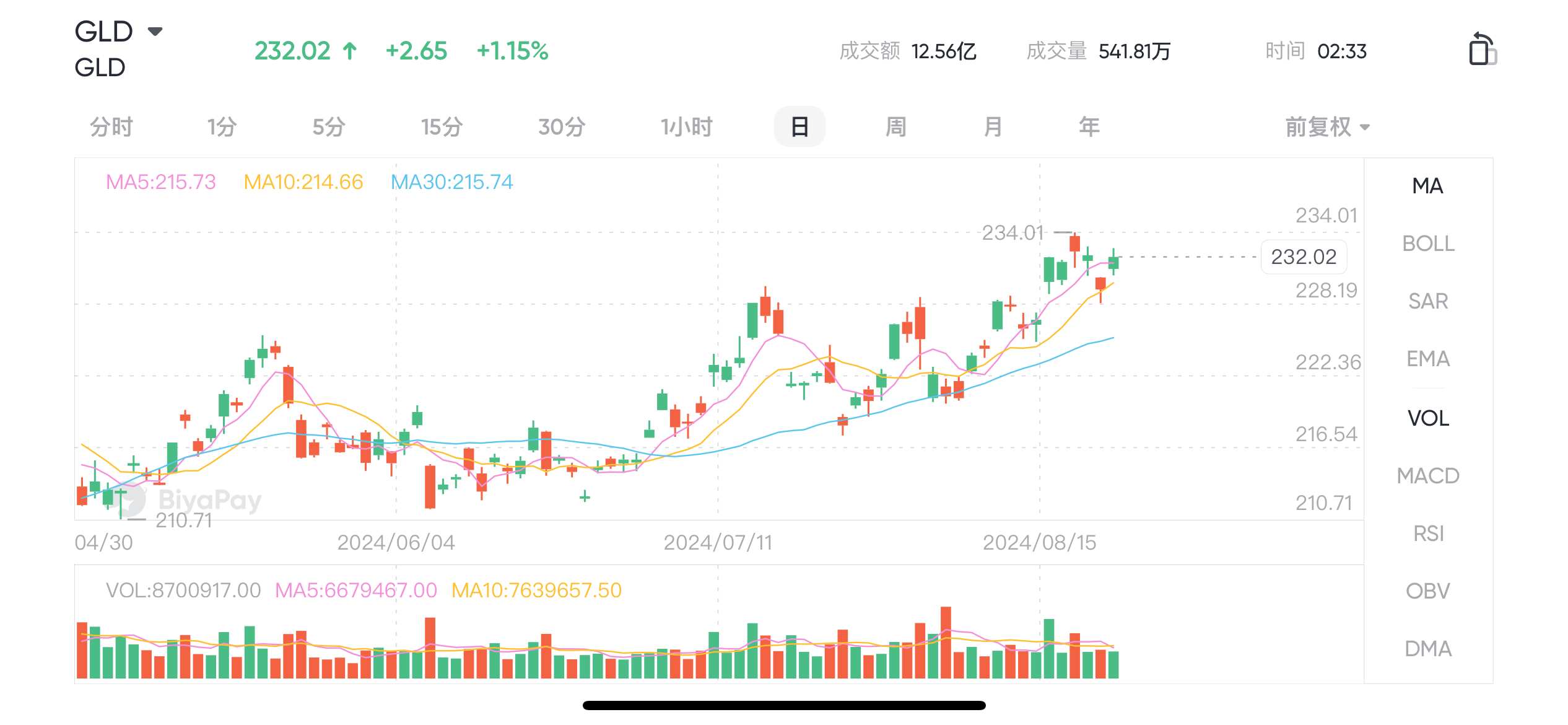
5. Real Estate ETFs
Real Estate Investment Trust (REITs) ETF : With policy adjustments, lower interest rates will reduce the cost of real estate financing, thereby increasing the attractiveness of the real estate market. The Vanguard Real Estate ETF (VNQ) may perform well and is suitable for investors seeking stable cash flow.
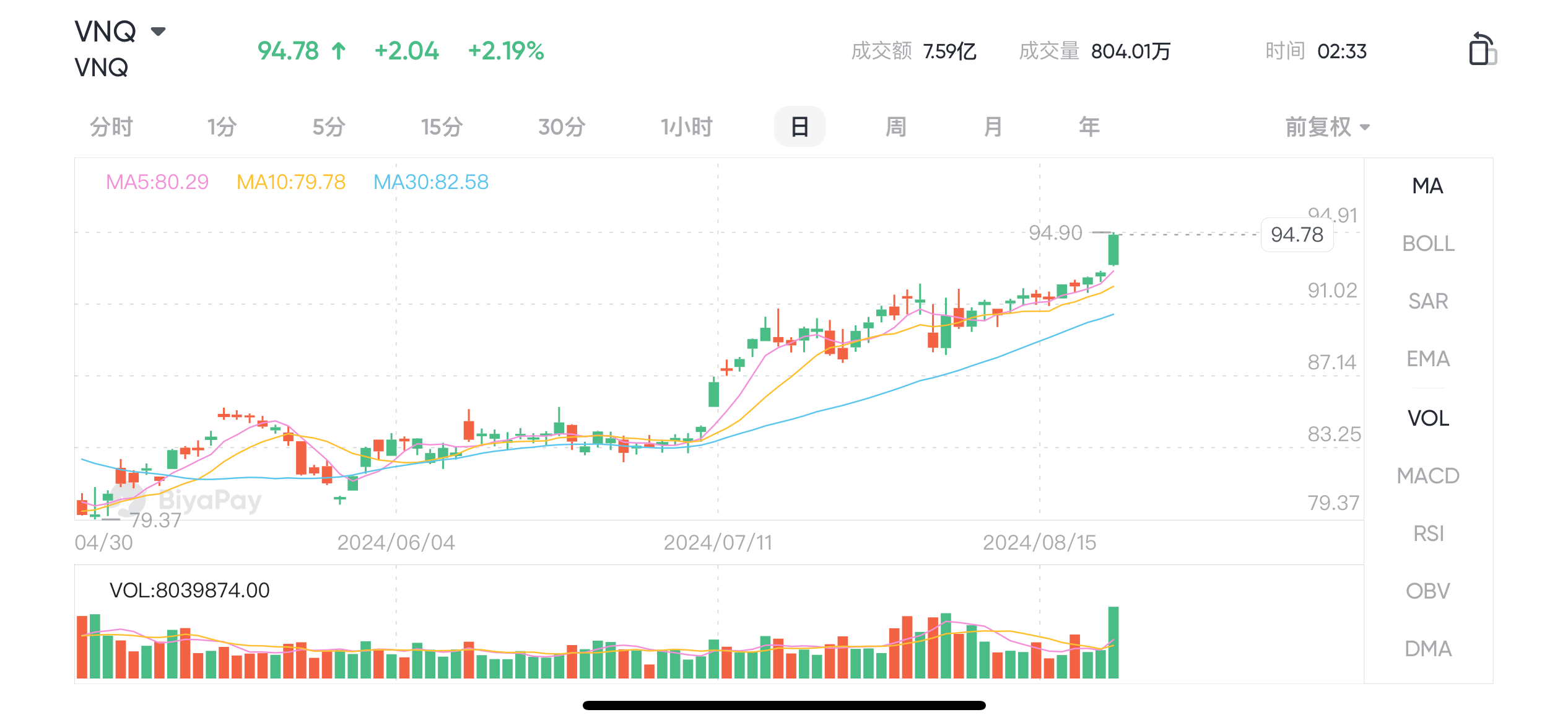
Powell indicated in his speech that the Fed’s confidence in inflation falling back to 2% has increased, and hinted at the need for policy adjustments, which will have a positive impact on the market. For ETF investors, the aforementioned bond, growth stock, high-yield bond, gold, and real estate ETFs may be the best allocation choices.
For these stocks that may benefit, investors can check and pay attention to several stock codes through the multi-asset trading wallet BiyaPay, choose the appropriate time to trade online in real-time at any time; at the same time, it also provides recharge digital currencies (USDT, BTC, etc.) to withdraw US dollars/Hong Kong dollars to bank accounts, and then deposit and withdraw funds to other brokerage platforms, so that BiyaPay can be used as a professional deposit and withdrawal tool. Investing in these ETFs through such a multi-asset trading wallet not only allows investors to benefit from potential interest rate cuts, but also facilitates investors to trade US stocks, invest in diversified asset classes reasonably, and cope with future market fluctuations, pushing up the market value of US stocks.
Under the expectation of interest rate cuts, some long-term stable assets usually perform well, especially those industries with high growth potential, such as Cloud Services and Biotech. The following are recommended long-term ETFs for Cloud Services and Biotech.
1. ETF Recommendation in Cloud Services
- Global X Cloud Computing ETF (CLOU)
CLOU ETF focuses on companies related to Cloud Services, covering fields such as Infrastructure as a Service (IaaS), Platform as a Service (PaaS), and Software-as-a-service (SaaS). CLOU invests in Cloud Service companies with strong growth potential, which usually perform better in a low interest rate environment because their future cash flow has a higher present value.
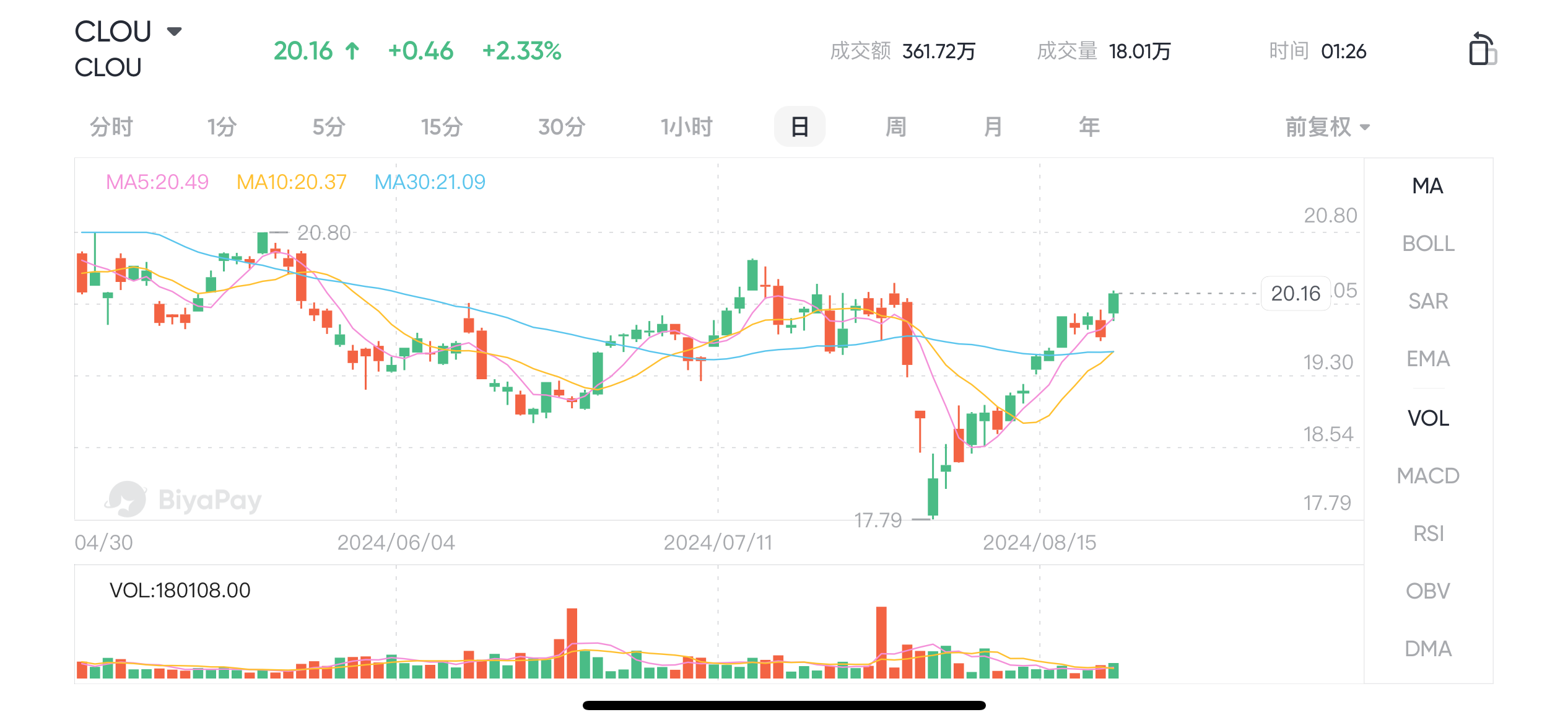
- WisdomTree Cloud Computing Fund (WCLD)
WCLD ETF invests in Cloud Service companies with high growth potential, especially those whose business models rely on subscription revenue. The ETF’s investment portfolio focuses on small and medium-sized growth companies, which often perform well in low interest rate environments.
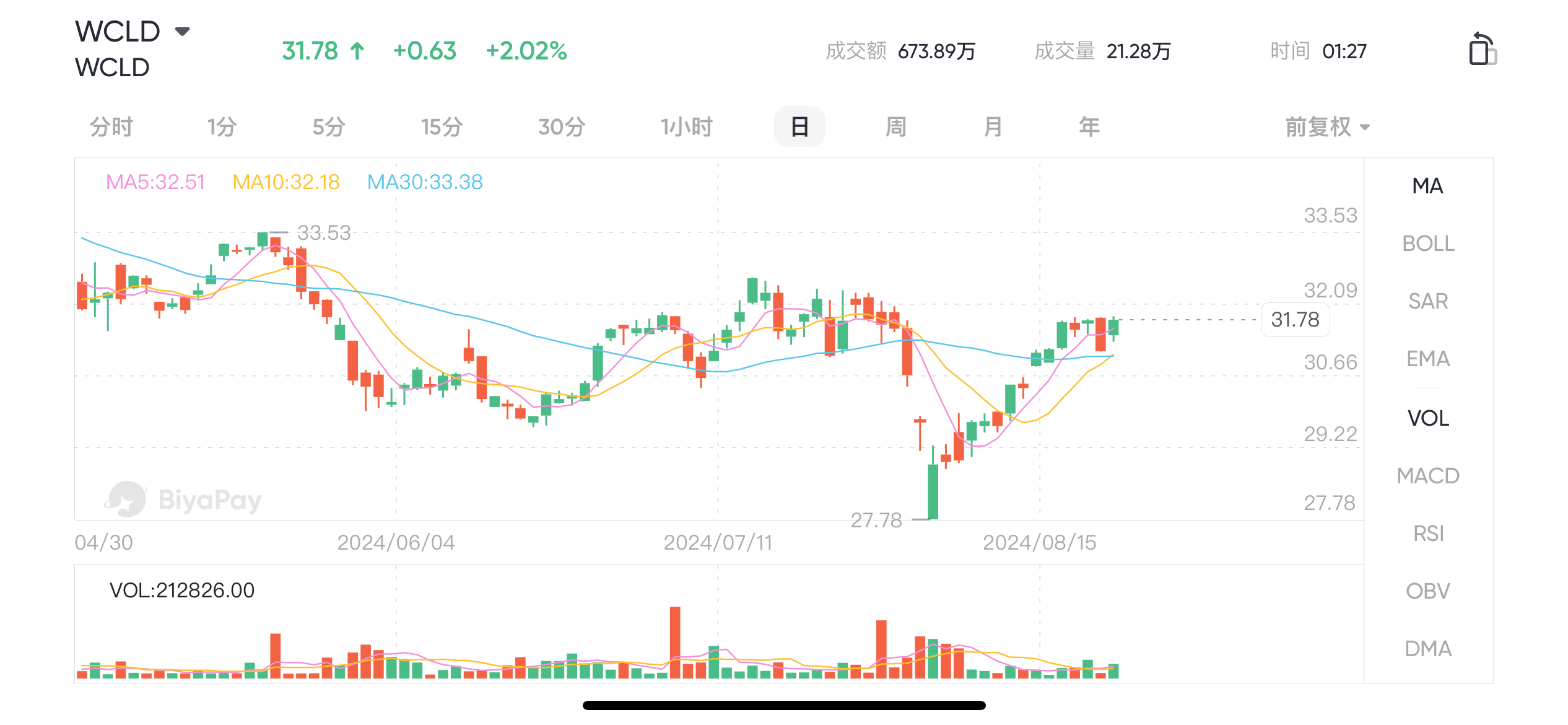
2. Recommended ETFs in the field of biotechnology
- iShares Nasdaq Biotechnology ETF (IBB)
IBB ETF covers large and medium-sized biotech companies listed on NASDAQ, focusing on the fields of biotechnology and pharmaceuticals. The biotech industry usually has a long R & D cycle and huge growth potential. Therefore, in a low interest rate environment, the long-term nature of IBB ETF makes it have good investment prospects.
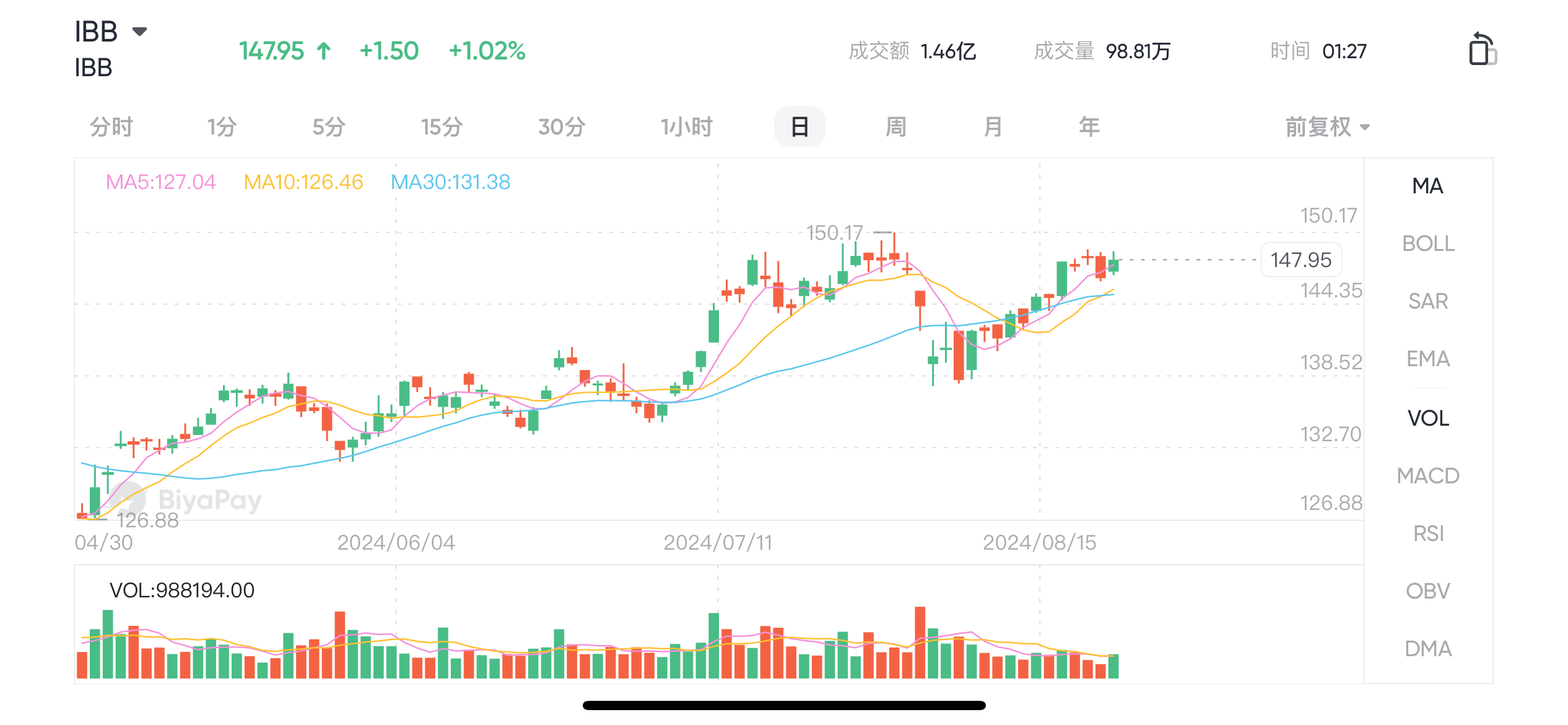
- ARK Genomic Revolution ETF (ARKG)
ARKG ETF focuses on innovative companies in genomics, biotechnology, and related fields. The ETF is managed by the renowned ARK Investment Management and invests in companies with disruptive potential. ARKG’s investment portfolio includes some cutting-edge biotech companies that are expected to achieve huge technological breakthroughs and market growth in the future, suitable for long-term investors.
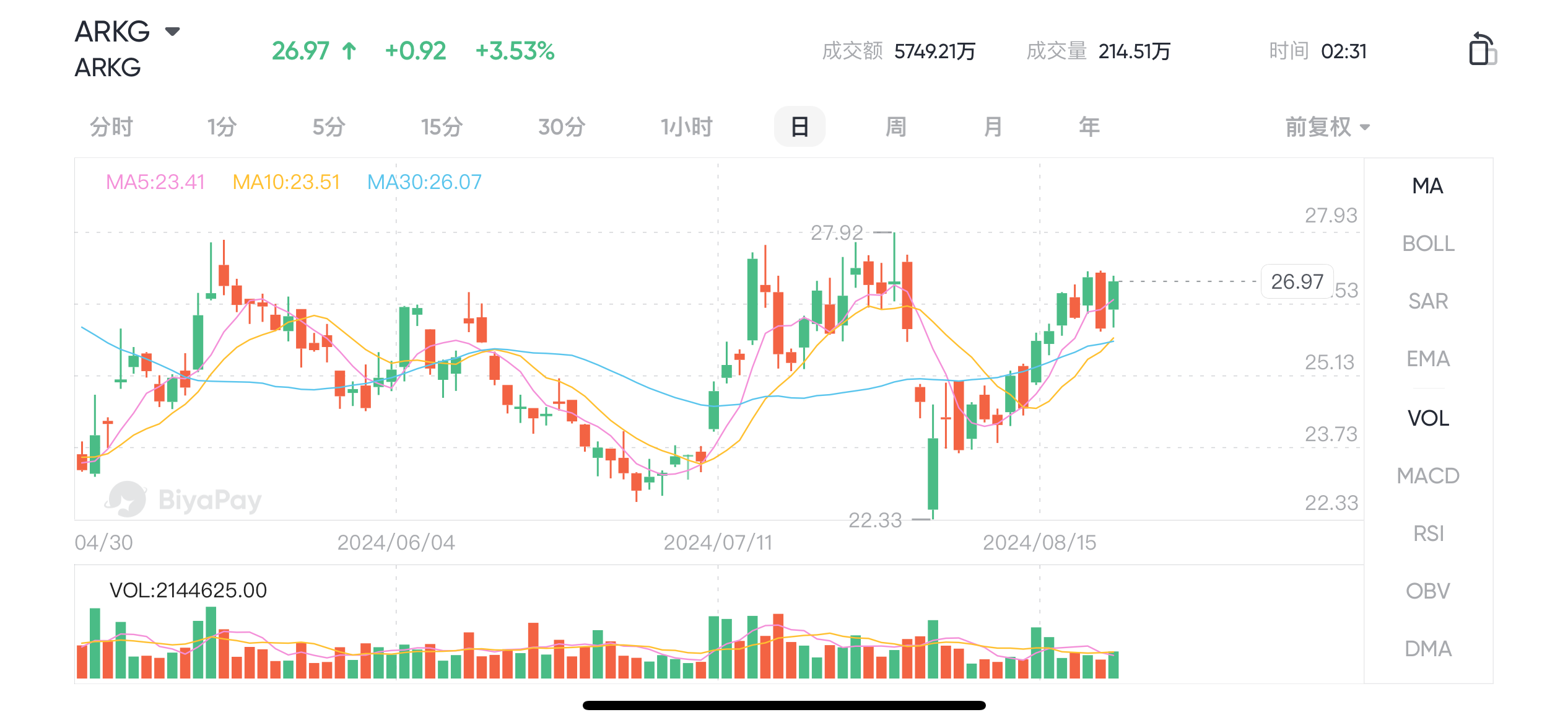
For investors who hope to benefit from the interest rate cut cycle, long-term ETFs in the Cloud Service and biotech sectors are ideal choices. ETFs such as CLOU and IBB provide broad industry coverage, while WCLD and ARKG focus on high-growth and innovative companies. These ETFs not only perform well in a low interest rate environment, but also have long-term growth potential, making them more suitable for long-term investors to allocate.
During the interest rate cut cycle, although increasing the layout of long-term assets usually has good return potential, it is also necessary to pay attention to potential risks. If the economic situation deteriorates or inflation exceeds expectations, it may lead to a reversal of market sentiment, which in turn affects the performance of long-term assets. Therefore, investors should balance their own risk tolerance and market expectations for allocation.

























